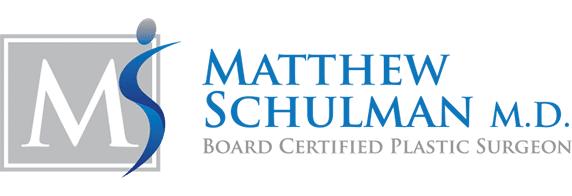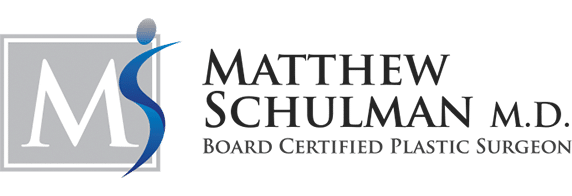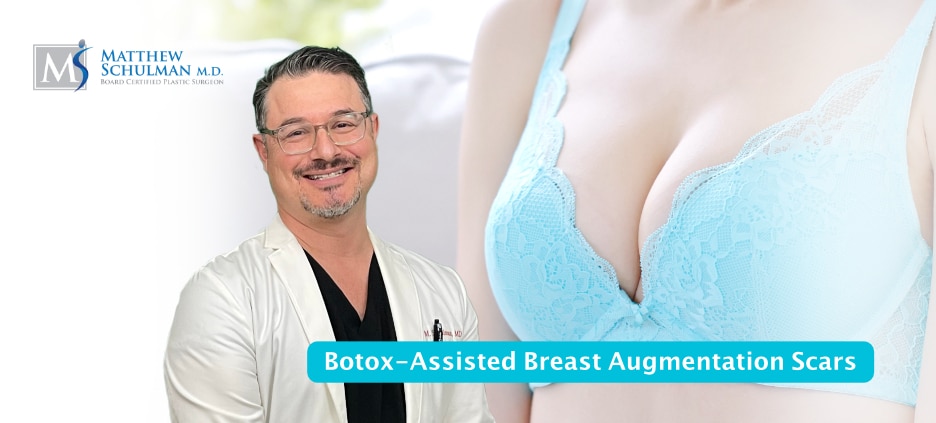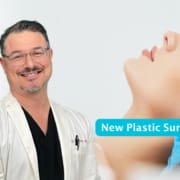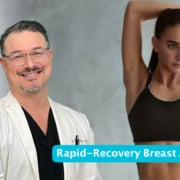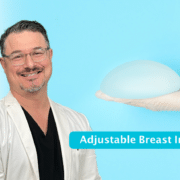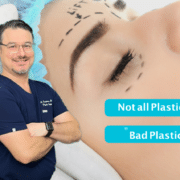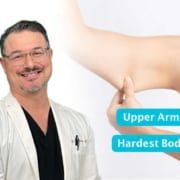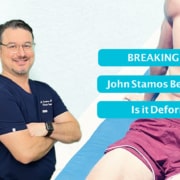As a specialist in cosmetic breast surgery, I perform a large number of breast augmentations. While over 300,000 breast augmentations were performed in the U.S. in 2011, not all of them were good ones. Breast Augmentations may appear easy to do, as evidenced by the countless poorly trained and inappropriate doctors trying to do this surgery. However, breast augmentation is very difficult to do really well and the revision rate for breast augmentation remains very high nationally. In my practice, I strive for natural-results, minimal breast augmentation complications, and a rapid recovery. I have created a technique for breast augmentation that I think helps me to achieve my goals. While perfection is impossible, I think I get pretty close.
Ultra-Short Breast Augmentation Scars Technique
My breast augmentations are performed using an ultra-short breast augmentation scars technique in which the incision is only slightly longer than an inch. The breast implants are then placed through this tiny incision using the aid of a Keller Funnel. This funnel helps to get the breast implant in through the small incision, but it also helps decrease complications such as infection, capsular contracture, and breast implant rupture.
I have also added Botox to my breast augmentations. Yes, you read that correctly. When done correctly, Botulinum toxin can be used to help achieve a more rapid and less painful recovery. I place very small amount of Botox into very specific areas of the chest muscle. This helps to relax the muscles, without interfering with the function of the chest muscles. The result is less pain and also a more rapid “settling” of the breast implants.
I created this Botox-Assisted Breast Augmentation scars technique and truly believe it will revolutionize breast augmentation surgery. I have been performing this procedure for several years and have worked out specifically where to inject the toxin and how much toxin is needed. I have already read about other doctors utilizing this technique and in some cases, claiming it as their own.
Aside from it being unprofessional for a doctor to purposefully mislead patients into thinking someone else’s procedure is theirs, it is also potentially dangerous to you the patient – incorrect injection of Botox can interfere with normal muscle function of the chest and arms, and incorrect dosing can potentially lead to toxicity and death.
We have all heard about Botox to reduce lines and wrinkles in the face. But I now use it in a totally new way – in your breasts. Yep, you heard that right. I perform a Botox-Assisted Breast Augmentation surgery. This involves injected Botulinum Toxin into the chest muscle during breast augmentation. Temporarily weakening the chest muscles during a breast augmentation serves several purposes:
Botox Is No Longer Just For Your Face
- Less pain
- Reduced feeling of “tightness”
- More rapid return to normal activities
- Faster “final result”
When a breast implant is placed beneath the chest (pectoralis) muscle, the muscle needs to be cut. This is the cause for the intense post-operative pain that many women feel in their chest during the first several days or weeks after surgery. Also, the healing muscle can cause painful muscle spasms for months after the procedure. By temporarily weakening the muscle surgery with Botox (or a Botox-equivalent from another company), there is significantly less pain and spasms during the healing process.
This allows my patients to take less pain medication and return to normal activity quicker. Also, because the muscle is relaxed, there is less feeling of “tightness” in the chest.
Even more important is that Botox-Assisted Breast Augmentation allows my patients to achieve the “final result” in a matter of WEEKS instead of MONTHS. The relaxed muscle allows the breast implant to drop into position much more rapidly than it would if the muscle was not partially paralyzed with Botox. With my technique, you can avoid that 3-4 month period of awkwardness when the implants are sitting too high on the chest.
The effects of the Botolinum Toxin begin in a few days and lasts for about 4 months. There is no permanent effect on your body and the dose that is used is not much more than someone would have injected into their face to reduce lines and wrinkles.
Now, You Can Add Botox To Breast Surgery To Ease Recovery
“During a Botox-assisted breast augmentation procedure , a precise amount of Botox is injected directly into the chest muscle from the inside. The Botox will relax the muscles for about three to four months,” Dr. Schulman told Byrdie.
Relaxing the chest muscles reduces muscle spasms as they heal, meaning less pain and shorter breast augmentation recovery time. It also improves the look of your new breasts. “Usually after traditional breast augmentation, the implants can appear to be high on the chest for about six months,” Dr. Schulman said. “This is normal, but high implants can look unattractive or very fake.”
When Dr. Schulman uses Botox to relax the muscles, however, the implants drop into a pleasing final position within four to six weeks.
One of Dr. Schulman’s patients — 31-year-old Jennifer, who works in Manhattan — told the New York Daily News about her experience with Botox-assisted breast surgery: “I felt great, like I didn’t have it done. I was back to work in a few days. The implants settled quickly.”
As far as risks go, Dr. Schulman says, “When done correctly, it has no negative effect on the chest muscle and will not interfere with any chest or arm strength.”
Less Post-Op Pain Faster Time to see Final Results
According to statistics released by the American Society of Plastic Surgeons (ASPS), nearly 13.1 million surgical and non-surgical cosmetic procedures were performed in 2010, a 39% increase in the last decade. Breast augmentation led all cosmetic surgeries with 296,203 procedures performed.
Matthew R. Schulman, M.D. board certified plastic surgeon and Assistant Professor of Plastic Surgery at the Mount Sinai School of Medicine has introduced a new method of breast augmentation using Botulinum Toxin, or Botox. According to Dr. Schulman Botox-Assisted Breast Augmentation has two major advantages – less post-operative pain and a more rapid final cosmetic result.
“In comparing Breast Augmentation surgery cases done with and without Botox, our before and after photos show those surgeries done with Botox reveal one month results comparable to the four month results of surgeries done without Botox.”
The procedure is done as a standard breast enhancement surgery where the breast implant is placed under the muscle. (This is the preferred position of implantation.) After the muscle has been elevated, Botulinum Toxin is then injected into the muscle before the implant is placed. This partially paralyzes the chest muscle, resulting in less muscle spasms that naturally occurs during the healing process, and dramatically reduces patient discomfort.
“The most exciting outcome we have seen with Botox-Assisted Breast Augmentation is the rapid achievement of the final cosmetic result,” says Schulman. Because the muscle is relaxed, the implant can drop into position faster. After surgery, implants will naturally appear higher on the chest as the chest muscle is contracting against the implant. With regular breast augmentation it takes about three to four MONTHS for the implants to drop into the desired position.
By paralyzing the muscle with Botox-Assisted Breast Augmentation, implants can settle into position in about three to four WEEKS.
According to Dr. Schulman, with Botox-Assisted Breast Augmentation there is less pain and a more rapid return to normal activities. Additionally, patients have a better overall cosmetic appearance in a shorter amount of time – getting them into halter tops, strapless dresses and bikinis faster!!
Contact Us to Book Your Consultation
For more information regarding Botox Assisted Breast Augmentation patients, to set-up an interview with Dr. Schulman or to view some dramatic before and after images, contact Dr. Sculman of Schulman Plastic Surgery NYC at 212.289.1851.
References
https://www.plasticsurgery.org/news/plastic-surgery-statistics?sub=2011+Plastic+Surgery+Statistics
